One of the most popular upright rosemary varieties, Tuscan Blue has a blue-green hint to its foliage, and blue-purple flowers.
The Latin name Rosmarinus refers to the dew (ros) of the sea (... more->
We spent 13 years building an abundant fruit forest, annual veggie beds, perennial medicinal herbs, and a healthy mixed hardwood-coniferous forest and now we've sold our property to the next stewards so that we can begin a new homesteading project in Vermont closer to our best friends and their kids.
Don't worry - we plan to keep this website up and running so that our customers can reference what we've written about our plants!
We'll let you know once we re-start a farm in Vermont!
One of the most popular upright rosemary varieties, Tuscan Blue has a blue-green hint to its foliage, and blue-purple flowers.
The Latin name Rosmarinus refers to the dew (ros) of the sea (... more->
French thyme has very small, pointy leaves. It is the most drought tolerant and has the most spicy flavor of the thyme varieties we grow. more->
This variety of culinary sage bears extra large pink flowers on taller stalks than the common seed-grown sage. Although some ornamental sages have been bred so that they are no longer flavorful,... more->
This is a lemon thyme that is variegated with slivery grey-green foliage. It makes a very nice contract interplanted with lemon variegated thyme. more->
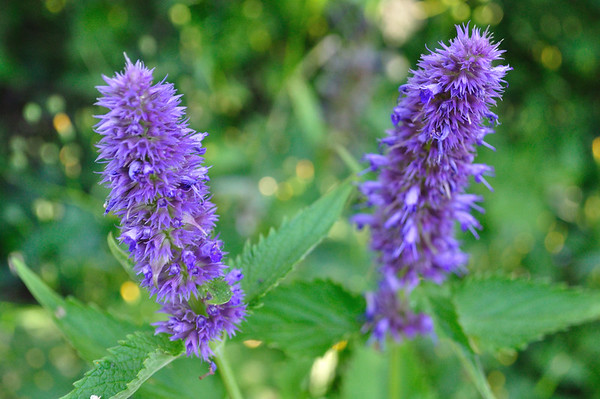
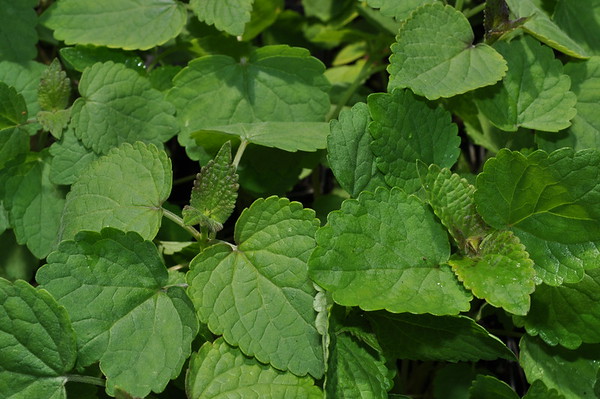
A great addition to any perennial garden, anise hyssop is a beautiful summer blooming perennial with edible leaves and flowers. The leaves, when steeped fresh or dried, make a refreshing minty... more->
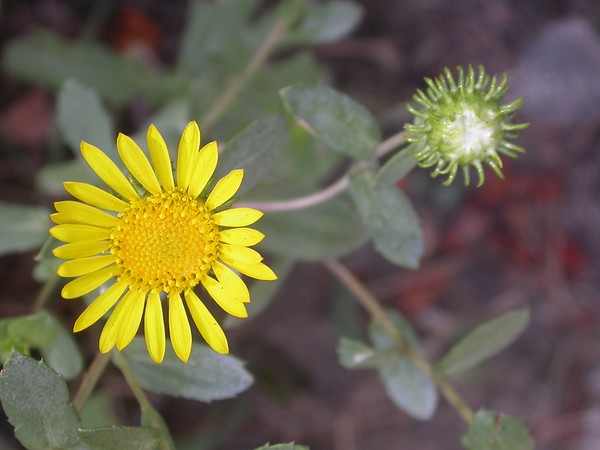
This native perennial in the sunflower family grows into a small shrub each season, bearing yellow flowers covered in sticky white resin. It thrives in sunny spots with moisture and tolerates... more->
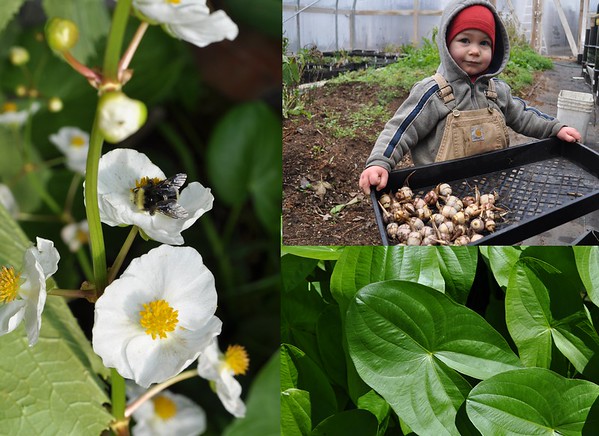
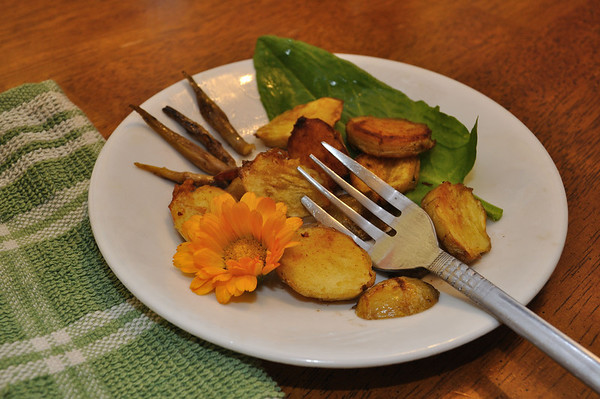
Wapato is a perennial plant that is native throughout North America. Historically, it was a staple food crop for people wherever it grew and continues to be a popular native food plant. Tubers... more->
A broad leaf evergreen ground cover, kinnikinnick is very hardy. It thrives in partial shade and will spread along the ground or grow along a slope, providing some erosion control. Drought... more->
Native to dry, brushy and forested hill slopes in northern California and southern Oregon, this is the largest species of biscuitroot that we grow. I've seen it up to 4 feet tall and several feet... more->
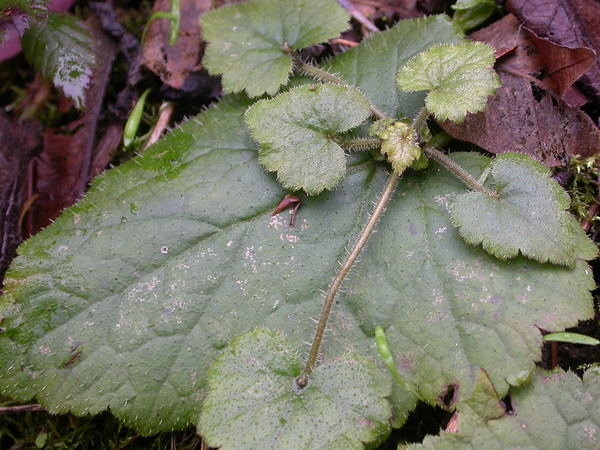
Pig-a-back plant is a trailing perennial ground cover native west of the Cascades that prefers moist forests and shady stream sides where soil is moist throughout the year. It blooms in late... more->

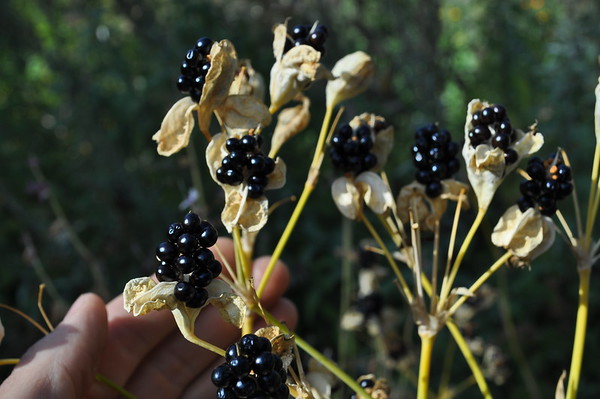
This leopard lily has now had its botanical name changed to Iris domestica. This is somewhat more accurate as it is an iris, not a lily. Leaves look like gladiolus and grow just over a... more->
This aromatic and savory variety of oregano is native to the Middle East where it grows in abundance on the rocky hillsides. It's leaves are covered in fine grey hairs that help it conserve water... more->
Native to moist and sunny meadows and slopes of the Pacific Northwest, this perennial herb makes a fine garden specimen. Bees and butterflies flock to its showy purple flower spikes held above... more->

This is the orange flowered variety of daylily. So pretty in the garden or on a plate! more->
No herb garden is complete without this fragrant and savory leaf to add to pasta sauce, soup stock and more. Sage also produces beautiful and edible pink flowers that attract pollinators.... more->
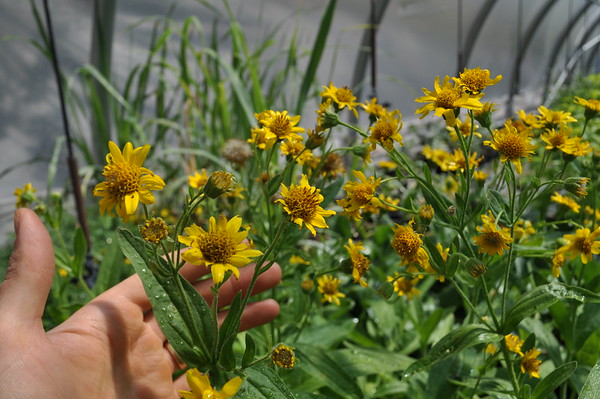
This arnica is native to western North America and is as potent as Arnica montana. It is a low growing, slowly spreading herbaceous perennial that prefers full sun to part shade and... more->
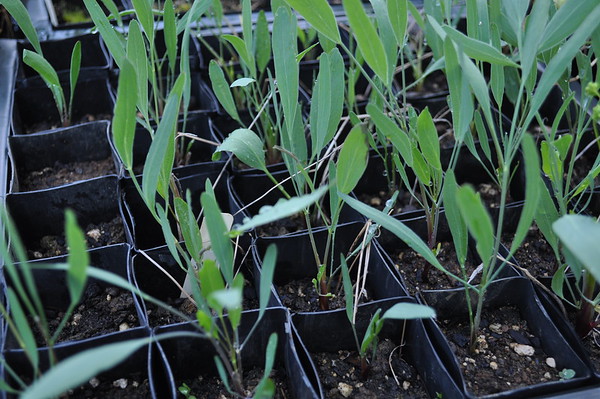
I really like the parsley-like taste of this edible perennial in the carrot family. Another common name is pestle-parsley. It's also native to wet meadows and well-drained hillsides in the... more->
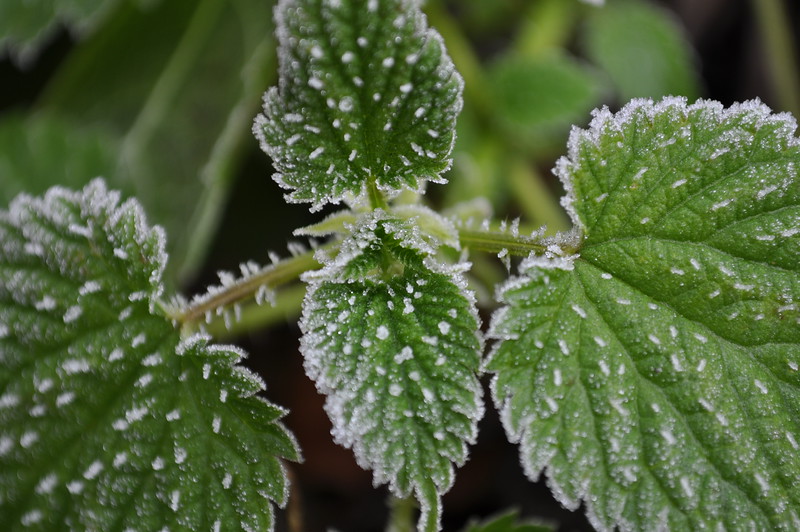
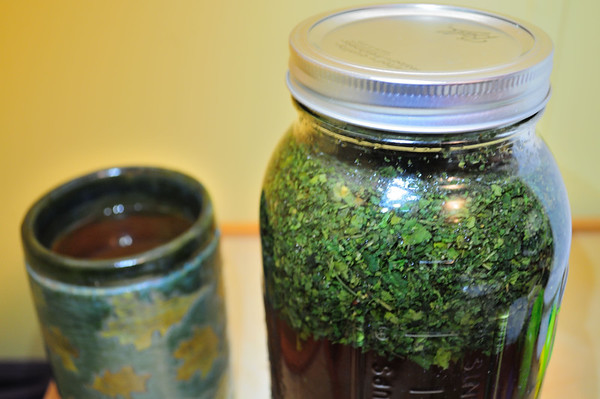
Stinging nettle is an herbaceous plant that grows in wet soil, often along river beds and stream sides. It spreads below ground by rhizomes but will not spread where it gets dry. Nettles are an... more->


Like other non-heading collard greens, this sturdy and cold-hardy vegetable produces large smooth, oval-shaped leaves that are really nice to harvest in fall, winter, and spring. It then grows... more->

This low-growing oregano has beautiful golden leaves and a nice aromatic flavor for cooking. It prefers full sun, and loses its color in part shade. more->

A lower growing clumping herbaceous perennial from Europe, lady’s mantle has attractive gray-green foliage and delicate yellow flower stalks that can be cut fresh and dried. This plant prefers... more->
Sweetgrass is native to northern North America and Eurasia. It is a very hardy spreading perennial grass that his a history of multiple uses by native Americans and Europeans. We reccomend that... more->
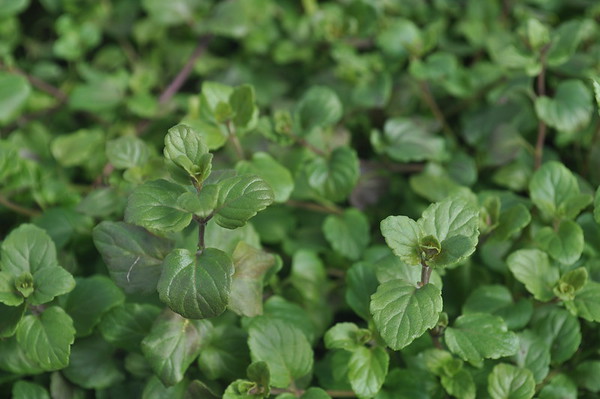
A native perennial in the mint family, yerba buena likes dappled shade and handles a wide variety of soil from deep rich organic matter to nutrient poor clay. Once established, it can handle... more->
Native to Oregon and much of North America, western mugwort is a rhizomatous perennial with beautiful gray-green foliage composed of long, strap-like leaves. Its yellow-white flowers bloom in... more->
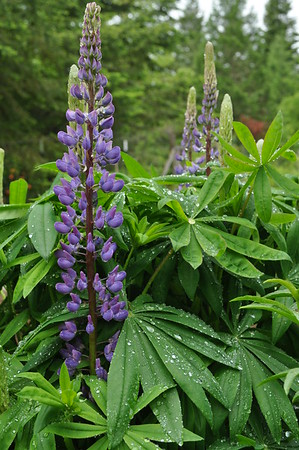
This perennial produces massive flowering stalks several feet tall that smell sweet and attract bees. Native to wetlands in the Willamette Valley and the Pacific Northwest, it performs really... more->
Valerian is an herbaceous perennial with flowering stalks up to 6 feet tall, bearing tiny white flowers with a fragrance like honey. The musky sweet roots are used in tea or tincture as a nervine... more->

With beautiful blue flowers clustered atop two foot tall stalks, hound's tongue is named for the shape and texture of the leaves that form a rosette at the base of the plant. It's native to the... more->
Kalitera means "the finest" in Greek, and this oregano lives up to its name. It has a smooth flavor like marjoram without the spicy bitterness found in seed-grown oregano. It grows upright on... more->
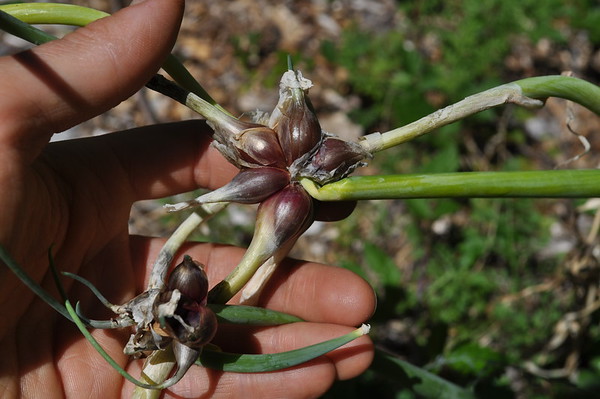
This onion has the funny habit of creating bulbs atop its flowering scapes that grow so big and heavy that the stems bend down and plant the bulblets in the soil about a foot away from the mother... more->
A hardy perennial in the mint family with delicious and fragrant blue flowers. This herb has been used as a tasty flavoring, expectorant, and antitussive in Europe and the Mediterranean for... more->

This is the official mugwort native to temperate Europe, Asia, and north Africa often referenced in witches spells and potions. It is a very strong cooling bitter that I like to use in apple... more->
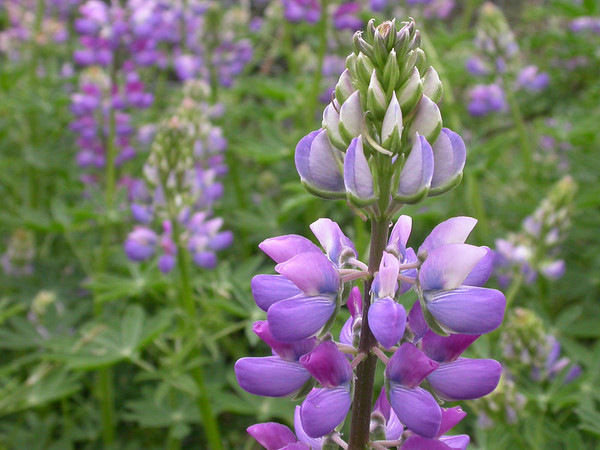
This perennial produces gorgeous purple flowering stalks in full sun or part shade. A Willamette Valley native, it tolerates drought and poor soil with root nodules that fix nitrogen. Deer... more->

One of the first flowers to bloom in spring, purple sweet violet flowers bring a subtle and sweet aroma to the garden as it wakes from slumber. With edible and fragrant flowers as well as edible... more->

This is the easiest to grow of all the Echinacea species in our area. It is very cold hardy, and sends down a multitude of pencil-sized roots. The bees and butterflies frequent the bright purple... more->

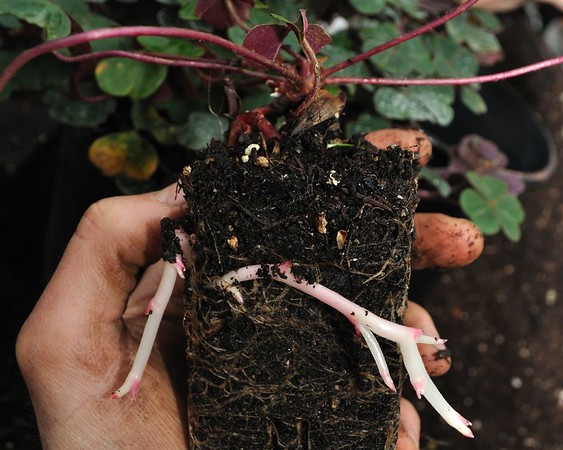
A beautiful shade-tolerant ground cover, the native Oregon wood sorrel spreads happily on the forest floor, or a shady garden floor. It likes lots of organic matter and shade. If it does not... more->
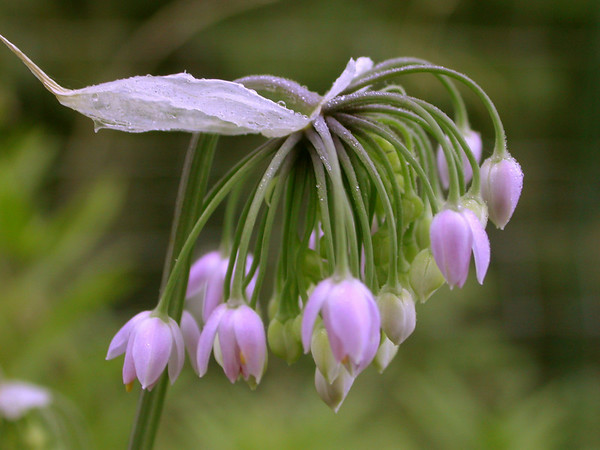
Nodding onion is a showy native onion that is also a great addition to a perennial vegetable garden. The grass-like leaves can be harvested any time and eaten raw like chives or cooked as green... more->
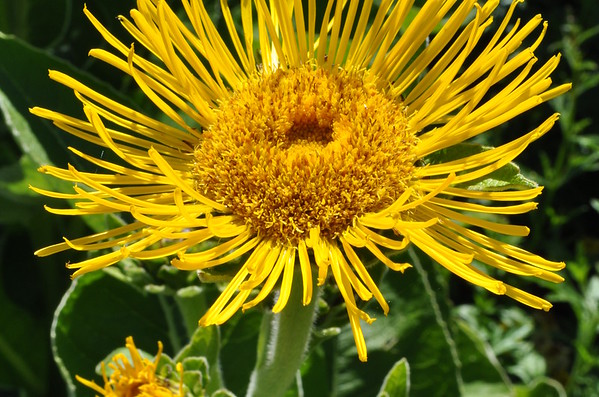
This sturdy herbaceous perennial bears giant leaves, stems up to 6 feet tall, and bright yellow flowers several inches across. Bees and other insects are always buzzing around to sip the nectar... more->

Oregon stonecrop has glossy green leaves that look like little elephant toes. I think it has the best-tasting leaves of any native Sedum. more->
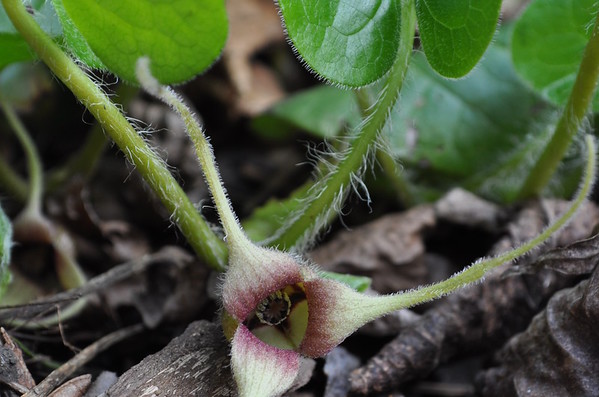
A beautiful native forest ground cover, wild ginger likes to grow in moist soil in shady areas. You will find it wild near creeks and on wet hillsides in the shade. Glossy heart-shaped leaves... more->
Edible flowers and leaves make muskmallow a great perennial for a sunny garden. It starts growing in early spring and blooms a deep pink in late spring through summer. Our plants bloom profusely... more->
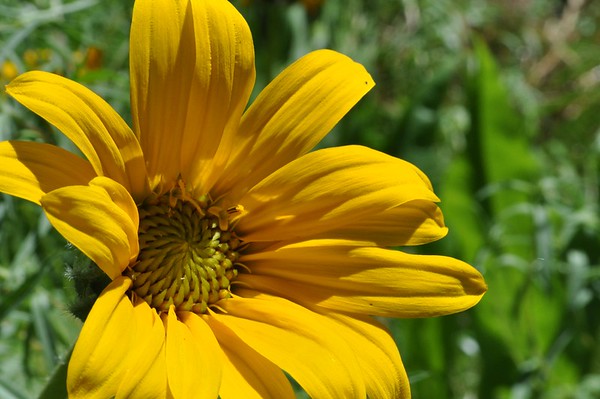
A sunflower-like native wildflower, narrow leaved mule's ears grows in grasslands and meadows in the fields and foot hills of the Willamette Valley. It is an herbaceous perennial and each year... more->
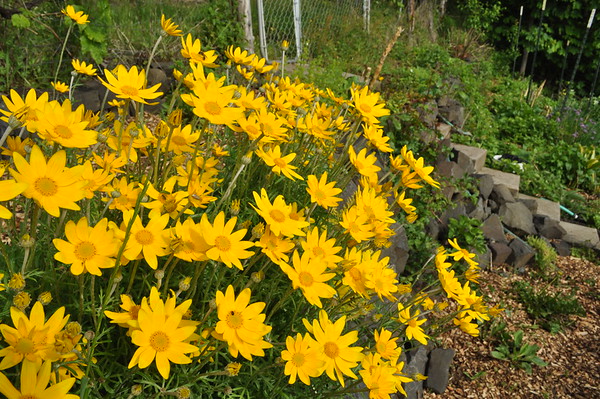
A beauty for a native wildflower garden, Oregon sunshine lives up to its name, bearing profuse quantities of deep yellow blooms. Gray green foliage is ornamental. This plant blooms no taller than... more->

We have had great success growing this native penstemon in our gardens. A perennial with striking purple flowers stalks that bloom in mid-summer, Cascade penstemon is easy to grow in our climate.... more->
This purple and white onion grows round bulbs in clusters that are firm, crisp, and have delicious savory flavor. more->
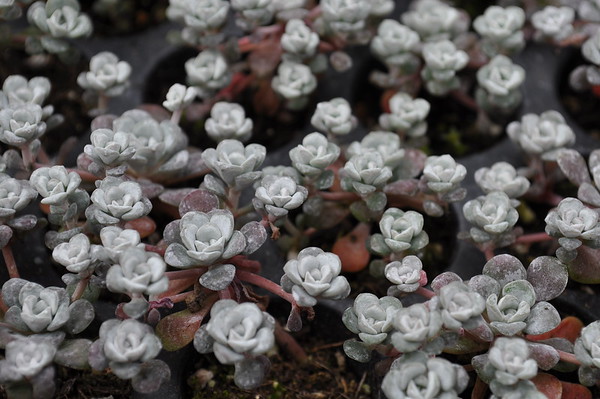
This grey-leaved and beautifully patterned stonecrop grows the fastest of any Sedum species in our gardens. The leaves are a bit more chalky and less palatable than the others, though.... more->

Unlike some milkweed species, swamp milkweed is a clumping perennial and does not spread by rhizomes. It has deep pink flower clusters on a two to three foot stalk. It is a host plant for monarch... more->
While you can find dozens of varieties of mint for your garden, we focus on cultivating peppermint because it is the best mint for soothing upset stomachs, relieving headaches, and cooling... more->
Native throughout most of the northern hemisphere, alpine strawberry is that amazingly sweet wild strawberry you remember from childhood. Small fruits pack superb flavor. Plants are vigorous in... more->